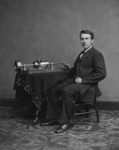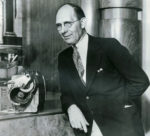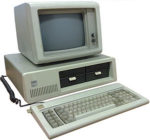 1877 – Thomas Edison finished figuring out his first phonograph. He handed the model of his invention to John Kreusi with instructions on how to build it. Less than 30 hours later, they had a machine that worked on the first try.
1877 – Thomas Edison finished figuring out his first phonograph. He handed the model of his invention to John Kreusi with instructions on how to build it. Less than 30 hours later, they had a machine that worked on the first try.
1915 – Charles F. Kettering of Detroit, MI patented the electric, automobile self-starter. And it’s a good thing he did — or we’d still be cranking our cars by hand.
1960 – Echo 1, NASA’s first successful communications satellite, was launched. Echo 1 was a 100-foot diameter mylar balloon that functioned as a reflector, so after it was placed in a low Earth orbit a signal could be sent to it, reflected by its surface, and returned to Earth.
 1981 – IBM introduced the personal computer with their 5150 model. The IBM PC ran on the Intel 8088 microprocessor at 4.77 mHz. It had 16 kilobytes of memory, no built-in clock or video capability — it was available however, with an optional color monitor. Prices started at around $1,500. The IBM PC was a smashing success and IBM quickly became the #1 microcomputer company, dropping Apple to #2.
1981 – IBM introduced the personal computer with their 5150 model. The IBM PC ran on the Intel 8088 microprocessor at 4.77 mHz. It had 16 kilobytes of memory, no built-in clock or video capability — it was available however, with an optional color monitor. Prices started at around $1,500. The IBM PC was a smashing success and IBM quickly became the #1 microcomputer company, dropping Apple to #2.

